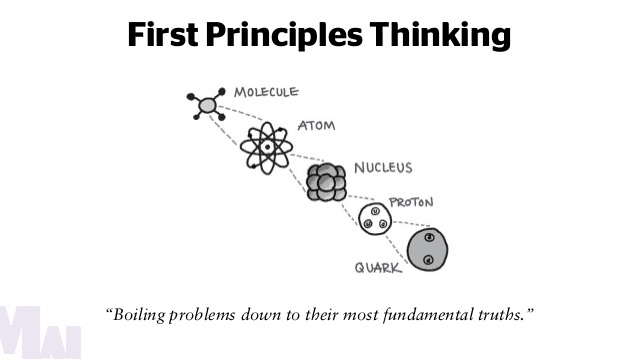Why you need to hire a Chief Community Officer (and why “community” and scale are often opposites)
Community’s a funny old word. I spent most of the 2010s hiring people for roles with the word “community” in the title, and used to ask, at every interview, how candidates would define it. At best estimate, I’ve done over two hundred interviews and never heard the same definition twice.
It’s an elastic phrase, something that exists in the ether between groups of people, a feeling, something with lockdown we’ve learnt very clearly this year that we seek out and require. Communities form, evolve, grow and halt all around us, all the time, and some of us have made nurturing these communities part of our professional lives.
Based on knowledge gained from years I’ve spent bringing people together, both paid and for free, often for tech companies, here are a few core beliefs I’ve developed:
- The best communities tend to bring together people around a shared identity, practice or belief (eg: playing football, time spent volunteering is important to me, I love to review restaurants, I’m Jewish).
- Broadcast channels aren’t communities. You’ve got to participate and listen more than you talk.
- You don’t own a community; you influence, co-create and curate it.
- Community building is a skill, but one tech has historically not wanted to pay for.
- Community never has and likely never will be valued the way software engineering is in the industry, although I’d argue humans are at least as complex as code.
Combined, these all mean that so many communities can be hard to productize in any conventional sense.
So it’s fascinating that the latest trend venture capital (VC) Twitter is into is community. This group is in itself a study in internet subculture, alternately a place of incredible groupthink (at one point, I had a hunch several of London’s finest shared a content strategist, so similar was the style) and tweets-at-dawn over something any reasonable person would let lie, but the trends these funders seize on are often batsignals and breadcrumbs of broader shifts in thinking.

There are tensions between the norms and standards much of the tech industry holds and what real, true communities need that need further exploration.
Because the scene looks very different in 2020 to the Noughties, when I first persuaded someone to pay me to bring people together. It feels like a golden era for anyone coming into the community field in tech. Podcasts like Get Together by People & Co and Masters of Community by David Spinks, newsletters like the Institute of Belonging and deep dives like Harvard’s How We Gather (Casper, who co-wrote it, knows I had this pinned above my desk for the last few years).
We have strong, true examples of community-directed products or technology enabled communities that make money; think Glossier or Twitch.
And we live in a big, broad, often overwhelming world. It’s an exciting notion that technology can make it easier to us to come together in the groups we choose, collaborate on a game or task, or to create real feedback loops around what we need — and then get it faster. So I don’t want to ding VC excitement; communities can serve our souls, and that is exciting.
I’ll save a deeper explanation for someone smarter but, essentially, the venture capital model creates portfolios of funded startups in the expectation most will flame out, a few will be sustainable and one will become exponentially huge. One will scale.
And here’s where it gets complicated.
James Wu educated me on the origins of scale and scalability; the notion was invented when the US began exporting slave plantations from the Caribbean to the Deep South.
It shouldn’t surprise us that scale is dehumanising.
You’d never push for your child to go to the biggest school. The feel of joining an enormous company where the vision and culture is more diffuse can’t compare to starting somewhere with ten people and clear values.
That scale, and the endless push for hockey-stick growth, is, I think, one of the core architects behind the pickle the tech industry is in.
There’s a tension between what scale demands and what most, if not all, communities need. Simply put, the strength of community is usually (if not always) weakened as the number of people in it grows.
The classic community builder example is Usenet. In autumn 1993, AOL’s blitzscale method for getting everyday Americans online meant the previously tight-knit and small-scale chat rooms welcomed in many new users. Much to unpack here about the early days of internet subcultures and inclusivity versus exclusivity, but AOL made a choice to go broad not deep. In gaining all those new signups, it meant Usenet also lost something. This coined the term “Eternal September”, the moment when superfans feel replaced by a new, broader group.
Whether because it shifts the power and autonomy of those early adopters, or because the atmosphere or feel of a space shifts, growth changes things. And it doesn’t always happen intentionally; I’m sure we’ve all been in group chats that lose their sparkle the more people that get added.
So what do new community-first companies need to consider?
1) We need — and anyone who knows me, knows this has been a decade-long obsession and frustration — Chief Community Officers or VPs of Community to sit alongside VPs of Product, Engineering, etc, who report to the CEOs.
This should be a more deeply respected function in tech. These leaders aren’t ‘just’ social media, or marketing, or trust and safety (all of which are also important), but a little bit of each. Community teams represent the magic that lives between people who use your product or space; they need big fat cheques and career paths. Not to conflate age and seniority, but we shouldn’t be seeing 22 year old community leads set up to fail against highly experienced Heads of Product.
Side note: it blows my mind that the largest consumer social companies of our time do not have these roles. Would Facebook be in a better place if there had been a CCO all along?
2) A core reason we need these leaders in place is to advocate for human scale metrics (so don’t treat them like human handbrakes when they do).
I believe there are brilliant opportunities out there to bring neighborhoods together, read books collaboratively, and so forth, but success for these companies might not look like what we already know.
We have to consider depth versus breadth. Even within big, you can create small and meaningful; just think of the incredible scale of religions, and the congregations and niches that exist the world over. But if the intent or product are shallow or focused on “community” as some kind of add-on, it’s much harder to create the depth and meaning communities need to succeed.
So, VCs, I love that you’re so excited by communities right now; I love that you want to bet on mechanisms and people that can, at their best, strengthen societies and create belonging at a time we need it most (it’s certainly where I spend my angel dollars).
Let’s make this more than a fad, but a moment to consider what we, as funders and consumers both, value in helping the next gen of products, spaces and humans thrive.
Thanks to Casper te Kuile, Bo Ren, Victoria Stoyanova and Stuart Waterman for their help in making my thoughts come to life.







